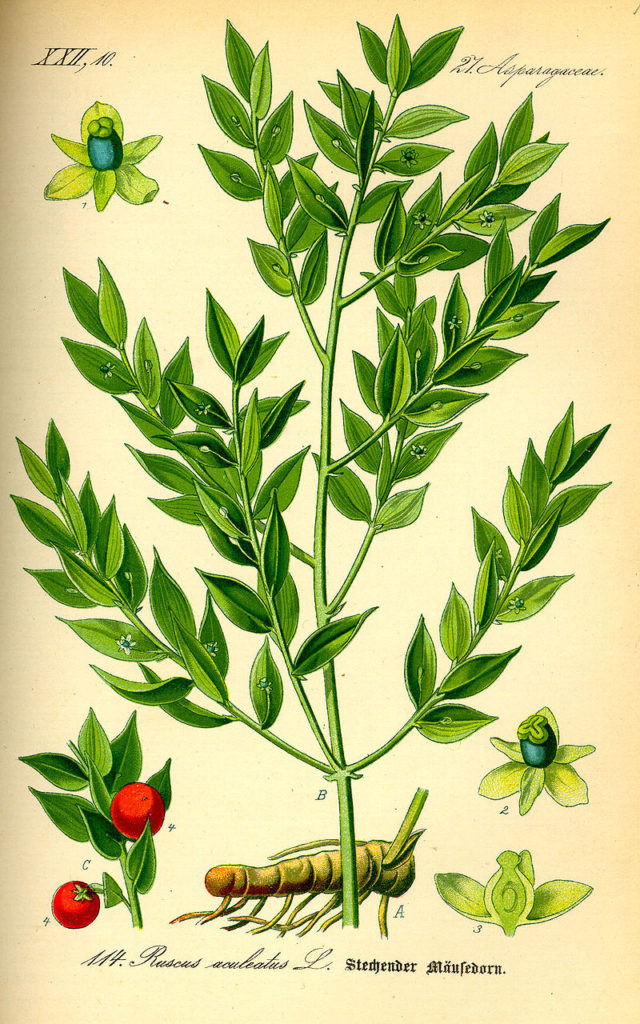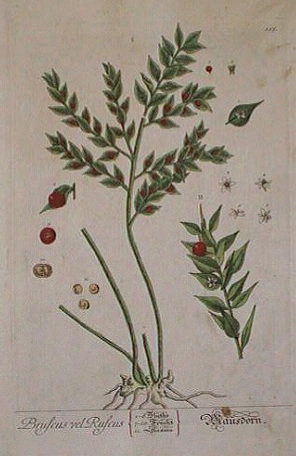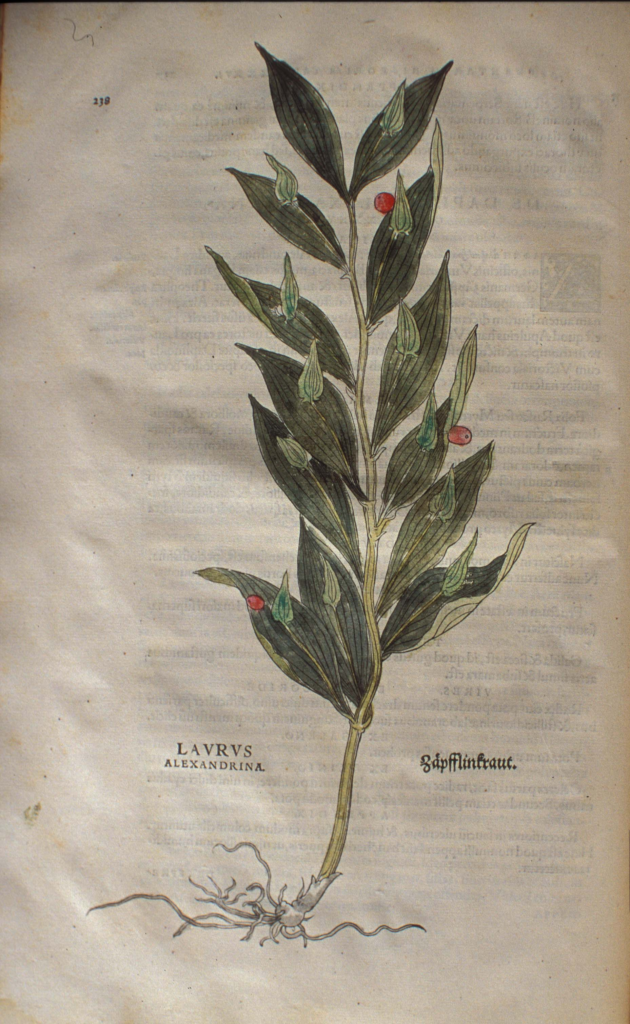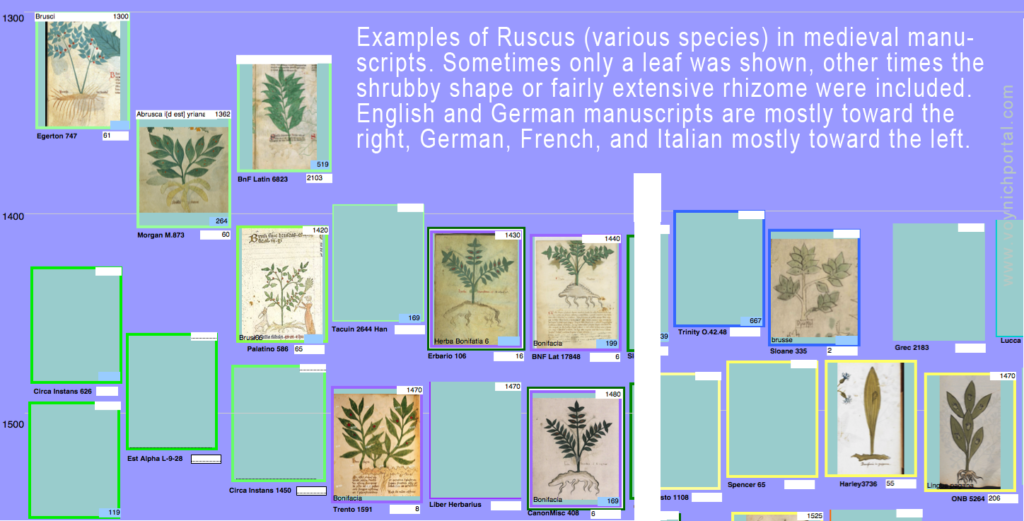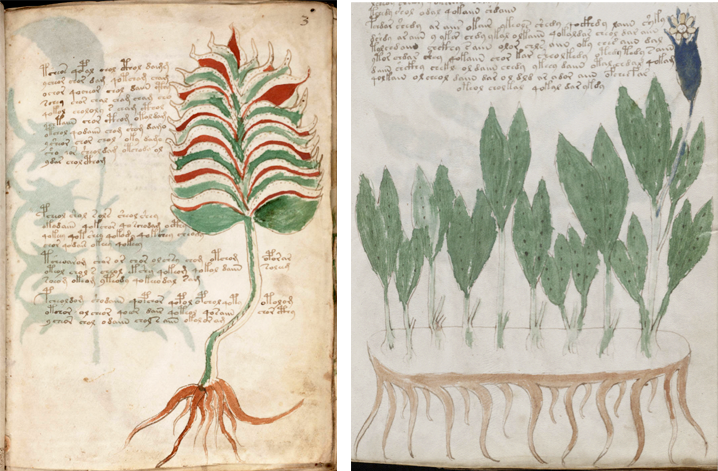24 June 2019
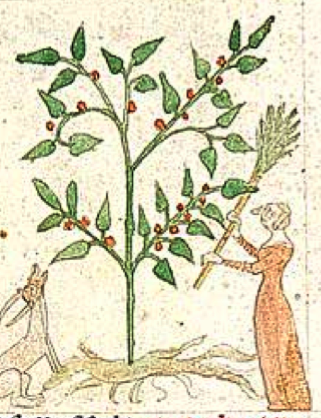
Butcher’s broom is a fascinating plant. It is native to Eurasia and is found in many medieval herbals. It has distinctive flowers and colorful fruits that are aligned with the inner part of the leaf when they first emerge. The branches and leaves are stiff, yet resilient enough to be used for broom-making.
Plant with Polka Dots
Here is a large-sized image of butcher’s broom, Ruscus aculeatus. Note the position of the flowers within the leaf:
But if you look closely, you will notice there is a stalk. It’s very slender so the flowers almost appear to be growing out of the leaf, an illusion that was emphasized by many medieval illustrators.
Even Elizabeth Blackwell drew it this way (which is not 100% accurate, since the fruits tend to hang down when they get ripe, but it gets across the impression that most people have of the plant).
But it isn’t just an illusion…
Some species of Ruscus have a flower that actually grows out of the leaf.
For example, Ruscus hypoglossum, also called Alexandrina’s laurel, and Ruscus hypophyllum have this charming adaptation:
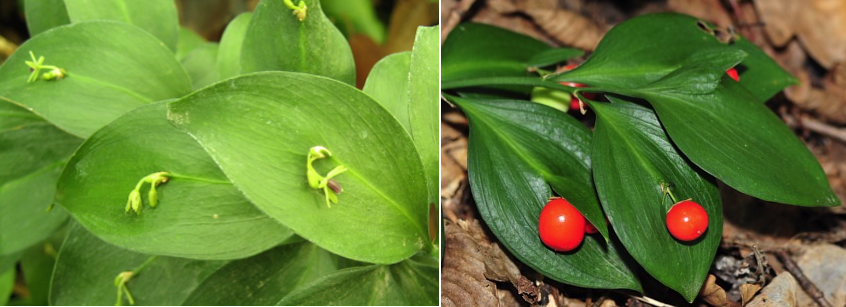
Many species of this plant are shrubby and have a fairly extensive rhizome (side-growing root from which new shoots may emerge). R. hypoglossum has an additional peculiarity, a little leaflet that covers the flower and sometimes looks like it’s pinching the berry, a quirk that inspired the name Double Tongue:
Medieval Ruscus
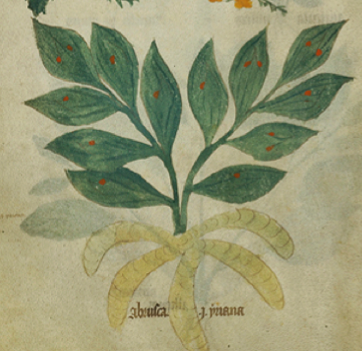
Both the unusual form of Ruscus and the fine-stemmed form of Ruscus are found in medieval herbals and many of them are drawn with dots on the leaves or red spots to represent the berries. Depending on the region and the species, they have names like Abrusca, Brusci, Brusse, and Bonifacia.
Some manuscripts included both kinds of Ruscus, but most of them chose one. Here are some examples from my files, from 14th- and 15th-century manuscripts:
Dots on Leaves
Is there a VMS plant with dots on the leaves? Yes. Plants 3r and 39r have dots, but there are many dots, drawn in lines, and the plants don’t look like Ruscus:
There is also a three-leaved plant in the small-plants section with dots on the leaves, but there isn’t enough detail to identify the plant. The label oraro isn’t much help either. It’s possible it is something like clover or medicago, which have spots or chevrons and which have leaves in groups of three, but it’s difficult to know for sure.
Plant 7v
What about Plant 7v? It has a prominent spot in the middle of each leaf. Could it be Ruscus?
No, I don’t think so. Obviously the dots are not flowers or seeds because the seedhead is at the top of the stalk. It’s a different kind of plant from Ruscus, one with a nicely drawn basal rosette, red and green leaves (this is a common trait in plants of this shape). It appears to have hairy or spiny leaves (I’m leaning toward hairy since there are other VMS plants that have more pointy margins that might be spiny). In contrast to the VMS plant, Ruscus leaves are smooth and very distinctly green.
Plant 7v has a tap root, Ruscus has a lumpy rhizome.
So if it’s not Ruscus, what is it?
Some plants have spots that are part of the plant. For example, some species of Orchis and Arum have brown speckles. Pulmonaria has numerous whitish spots (in fact, I think Plant 39r might represent Pulmonaria).
Some plants have specific parasites or diseases that consistently create spots. Some have spots that look like rust (e.g., Saxifraga mutata).
Overall Shape & Characteristics
There is a group of smallish herbs that look like VMS 7v. Most of them are small-to-medium-sized in height. They all have a tall slender central stalk and several of them have rounded seedheads. A few of the leaves grow up the stalk, but most are concentrated at the base in a whorl. Many of them are hairy.
This group of plants often has a mixture of red and green leaves later in the year when the plant goes to seed, and many of them have tap roots or a few fine tendrils similar in shape to buttercup roots.
Some of them have spots, some of them have little bumps on the leaves that look like spots because they are sufficiently raised to create shadows (e.g., Arabis, Erophila, Limonium, Silene sedoides, some species of Androsace, and Draba).
Here are some examples showing the overall form. Note the basal rosettes on the herbarium specimen bottom right is most similar in orientation to the VMS drawing. Basal rosettes were often drawn as though flattened in medieval manuscripts:
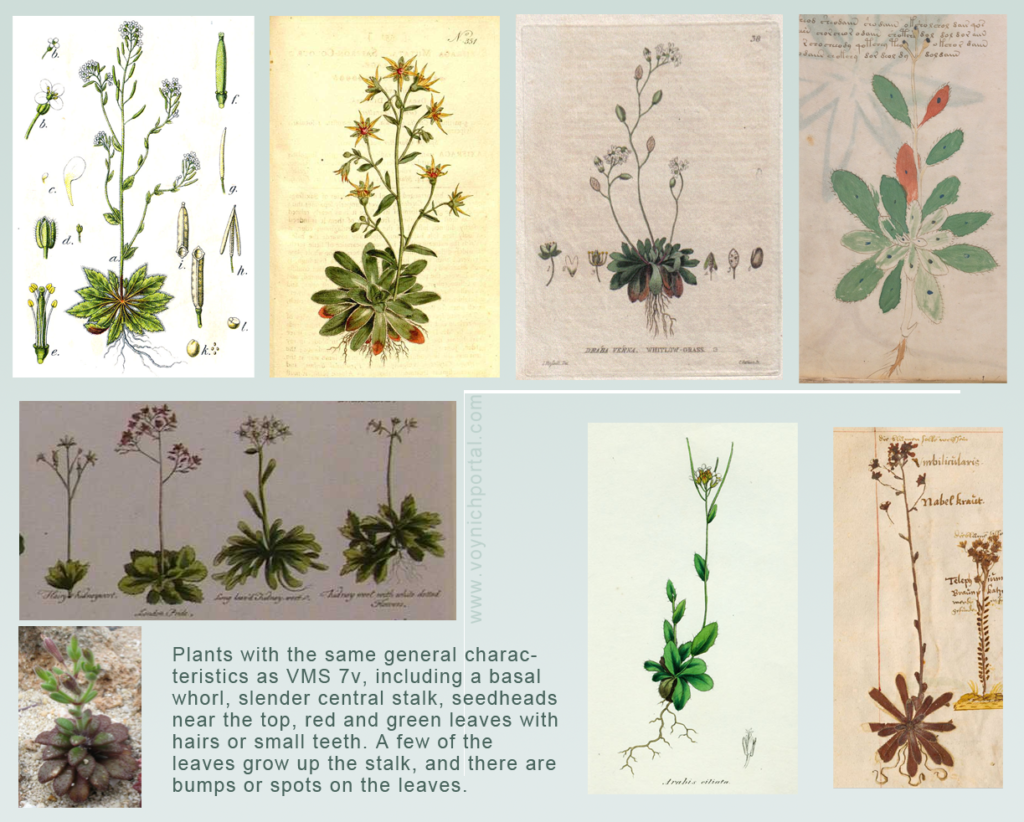
There are also plants that look like 7v that catch dew on their leaves, which make round sparkly dots, and have little teeth on the edges of the leaves, like Lewisia cotyledon. Some plants are incurved and collect a single drop of dew, but not all of them have hairy leaves.
It’s hard to choose among these plants. They are all very similar and all have distinctive bumps or spots, and many have red leaves mixed with the green, or are distinctly red and green later in the year, but the VMS seedheads appear to be somewhat rounded, and Arabis tends to produce long narrow pods, so perhaps Arabis is less likely than some of the others. Draba has rounded seedpods but it’s still difficult to eliminate the others.
Summary
I hope it is clear from these examples that Plant 7v is not likely to be Butcher’s broom. It has the wrong overall shape and a completely different seed stalk. Which of the rosette herbs it might be is difficult to say, but the seedheads are more similar to Draba and Silene than most of the others.
J.K. Petersen
© Copyright 2019 J.K. Petersen, All Rights Reserved

